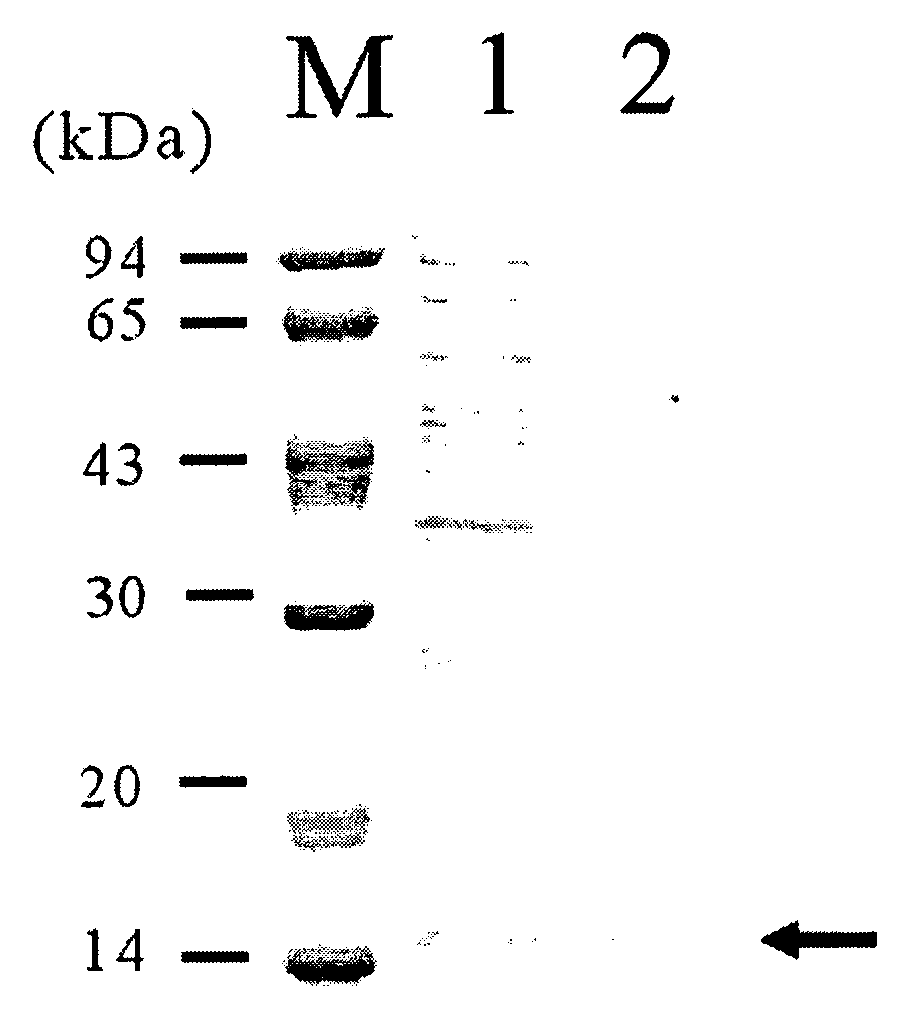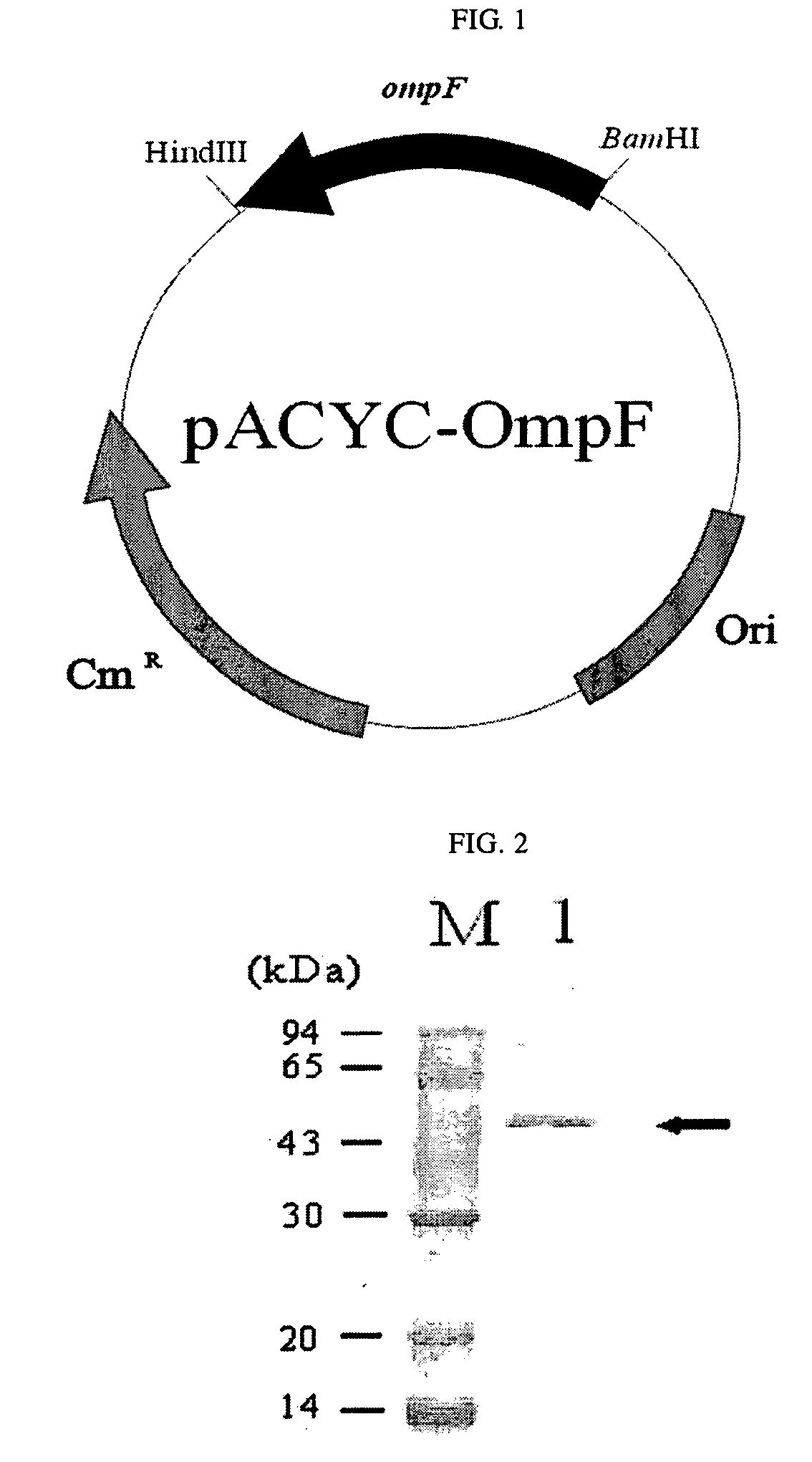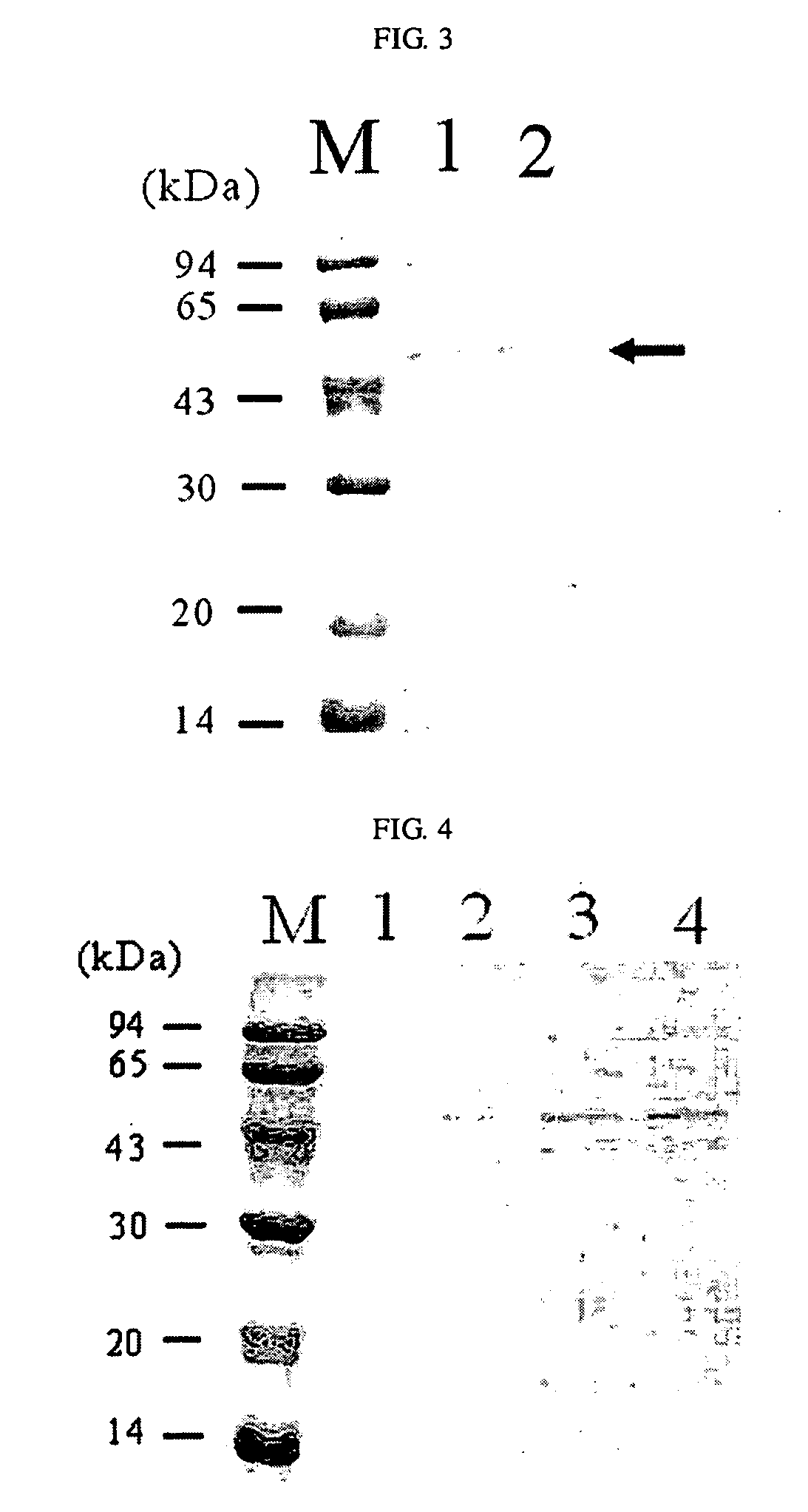Method For Extracellular Production of Target Proteins By Co-Expression of Ompf and Target Proteins
a technology of target proteins and co-expression, which is applied in the field of extracellular production of target proteins, can solve the problems of reduced yield, complex isolation and purification procedures, and high cost of isolation and purification procedures, and achieve good efficiency
- Summary
- Abstract
- Description
- Claims
- Application Information
AI Technical Summary
Benefits of technology
Problems solved by technology
Method used
Image
Examples
example 1
Development of OmpF Gene Expression System
[0040]A chromosome was isolated from E. coli BL21(DE3), and then, to clone an ompF gene and its promoter region, primer 1 of SEQ ID NO: 1 (5′-CGGAATTCTGGATTATACCGACGCAG-3′) and primer 2 of SEQ ID NO: 2 (5′-GCGGATCCTTAGAACTGGTAAACGATAC-3′) were synthesized. The chromosome was subjected to PCR using the primers 1 and 2 to obtain a 2160-bp PCR product. The PCR product was digested with HidIII and BamHI and cloned into pACYC184 (New England Biolabsd, USA). The cloned plasmid was transformed into E. coli XL1-Blue [supE44 hsdR17 recA1 endA1 gyrA96 thi relA1 lacF′(proAB+ lacIq lacZ ΔM15 Tn(tetr))] to obtain recombinant plasmid pACYC-OmpF (FIG. 1).
example 2
Construction of Recombinant Plasmid pTrcS1Phoa
[0041]A chromosome was isolated from E. coli W3110 (derived from E. coli K-12, λ−, F−, prototrophic), and then, to obtain an alkaline phosphatase gene, primer 3 of SEQ ID NO: 3 (5′-GGACTGCAGCACGGACACCAGAAATGCCTGTT-3′) and primer 4 of SEQ ID NO: 4 (5′-GCGGGATCCTTATTATTTCAGCCCCAGAGCCGG-3′) were synthesized. The chromosome was subjected to PCR using the primers 3 and 4. The PCR reaction was performed under the following conditions: pre-denaturation at 94° C. for 5 min; 30 cycles of denaturation at 94° C. for 45 sec, annealing at 52° C. for 45 sec, and extension at 72° C. for 1 min and 10 sec; and then, final extension at 72° C. for 7 min. The DNA fragment obtained by the PCR reaction was electrophoresed on agarose gel to isolate about 1360 bp DNA fragment. The isolated DNA fragment was digested with two restriction enzymes PstI and BamHI. Meanwhile, recombinant plasmid pJS101ΔP (Choi, J. H., et al., Appl. Microbiol. Biotechnol., 53:640, 200...
example 3
Extracellular Production of Alkaline Phosphatase
[0042]An E. coli BL21(DE3) strain was co-transformed with recombinant plasmids pACYC-OmpF and pTrcS1PhoA. The transformation was performed by electroporation, and the transformation strain was selected from an LB plate medium containing antibiotic ampicillin (50 μg / L) and chloramphenicol (34 μg / L). The transformed strain was inoculated into LB liquid medium (10 g / L tryptone, 5 g / L yeast extract, 5 g / L NaCl) and cultured at 30° C., and then, examined for the extracellular secretion of alkaline phosphatase. When the optical density (O.D.) measured at a wavelength of 600 nm with a spectrophotometer after inoculation into the liquid medium reached 0.7, each of 0.1 and 1.0 mM of IPTG was added to the culture medium to induce the gene expression. 12 hours after the induction of gene expression, 1 mL of each culture broth was collected and measured for alkaline phosphatase activity, at the same time, analyzed on SDS-PAGE gel (FIG. 2). In FIG....
PUM
| Property | Measurement | Unit |
|---|---|---|
| temperature | aaaaa | aaaaa |
| temperature | aaaaa | aaaaa |
| wavelengths | aaaaa | aaaaa |
Abstract
Description
Claims
Application Information
 Login to View More
Login to View More - R&D
- Intellectual Property
- Life Sciences
- Materials
- Tech Scout
- Unparalleled Data Quality
- Higher Quality Content
- 60% Fewer Hallucinations
Browse by: Latest US Patents, China's latest patents, Technical Efficacy Thesaurus, Application Domain, Technology Topic, Popular Technical Reports.
© 2025 PatSnap. All rights reserved.Legal|Privacy policy|Modern Slavery Act Transparency Statement|Sitemap|About US| Contact US: help@patsnap.com



